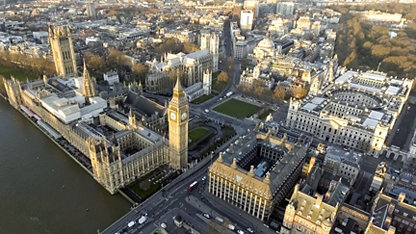Unifying global themes are emerging from differing government construction recovery plans. These themes provide insight for RICS professionals to fully embrace new recovery opportunities.
Global stimulus
Governments around the world are looking at construction as a key component of their economic recoveries, albeit with different imperatives.
In June, it was reported that the US is considering an infrastructure plan worth $1 trillion to help revive the economy from the fallout of the pandemic. Under the plan, most of the money will be earmarked for infrastructure projects involving roads and bridges – meanwhile the rest of the funds will be devoted to building the US 5G network and improving internet services in rural areas of the country.
In Europe, the European Union has stated that recovery from the effects of the pandemic will only be successful if it is accompanied by the restructuring of our society, incorporating demographic, economic, systemic injustice and other current societal challenges. They argue we need to focus on reconstruction as well as on recovery.
Meanwhile, in China, talk surrounds a ‘new infrastructure’ concept – which started as a list of information and communication technologies but has since been expanded to include low-carbon transport and energy.
In the UK, the government has revealed that up to £37bn of infrastructure work is in the pipeline this financial year, including four ‘shovel-ready’ projects on the new highspeed railway line between London and Birmingham.
Despite different markets, different political systems and different imperatives, there are also recurring themes emerging.
“Despite different markets, different political systems and different imperatives, there are also recurring themes emerging ”
Behaviour patterns impacting construction design and operations
Alongside government stimulus, changing patterns of behaviour are set to affect building and asset use, and therefore, design considerations and construction operations.
Social distancing and restrictions on movement seem likely to apply for months. As a result, people are increasingly becoming used to working from home or reduced travel, which once the crisis abates, will impact on the future use of buildings and assets, and therefore, design.
To accommodate health measures, construction schemes are likely to have longer durations and therefore different levels of productivity. New solutions, such as modern methods of construction, may also need to be re-evaluated in the light of social distancing because they allow less intensive occupation of construction sites.
Risk allocations and contract provisions will need to be carefully considered to ensure the ‘new normal’ is fairly and properly priced.
New decision-making trends
Construction, though, is difficult to kick start, there are major risks in delivery and emerging new trends at the forefront of decision-making. Where is the money coming from? How can we show the true societal benefits? How can infrastructure be greener? How can we design out inequality?
In the short term, governments will look at fiscal and monetary incentives to attract private sector investment into construction. Also, where they act as the public sector client, they are likely to enable quick start projects which are less constrained by the lengthy planning processes associated with long, complex capital projects. Simplification of the planning and approval process may accompany this approach, as we are seeing in the UK.
“In the short term, governments will look at fiscal and monetary incentives to attract private sector investment into construction ”
Over the medium and long term, many countries are looking at using the pandemic as a catalyst for greater reforms, including embracing more Environmental, Social and Governance (ESG) policies in project initiation and greater use of technologies such as Building Information Modelling, machine learning and blockchain.
Professionals should, take note of these underlying trends in project decision-making, since their own success in securing commissions in the ‘new normal’ will depend upon emerging knowledge and initiatives in these areas. Skills will be critical in the recovery.
RICS thought leadership surrounding the recovery
RICS is actively convening with global bodies and engaging the profession in this debate. We have arranged thought provoking webinar sessions with the World Economic Forum and the Global Infrastructure Hub concerning construction recovery, held idea generation meetings with the profession through market forums and contributed to the UK recovery plan through the Construction Leadership Council.
In summary
- New patterns of behaviour will impact building use and design considerations, and construction operations.
- To accommodate health measures, construction schemes are likely to have longer durations.
- In the short term, governments are likely to enable quick start projects less constrained by lengthy planning processes.
- Many countries are looking at using the pandemic as a catalyst for greater ESG reforms in the longer term.
About the author

Alan Muse FRICS
Director of Built Environment Professional Groups, London, UK, RICS
Alan has more than 30 years experience in construction (with 15 years as a director), specialising in the project and cost management of schemes up to £4 billion. Projects have been across all sectors, but particularly offices, industrial, mixed-use, urban regeneration, data centres and public sector schemes such as schools and rail and road infrastructure. Overseas experience includes spells in both the Middle East and Indonesia.

















